 |
|
|
| (Information by Peter Kessler, with additional information by Allan Rousso, from Palestine, Joshua J Mark (available via the Ancient History Encyclopaedia website), from Easton's Bible Dictionary, Matthew George Easton (1897), from Meqorot u-Meḥqarim be-Toldot Yisrael, Simha Assaf (Jerusalem, 1946), from the Illustrated Dictionary & Concordance of the Bible, Geoffrey Wigoder (General Ed, 1986), from A History of Palestine, 634-1099, Moshe Gil (Cambridge University Press, 1997), from The Land of the Negev, Yehuda Gardus & Avshalom Shmueli (Eds, Ministry of Defense Publishing, 1978-1979, in Hebrew), from Ottomans in Syria: A History of Justice and Oppression, Dick Douwes (I B Tauris, 2000), and from External Links: Encyclopaedia Britannica, and History: Foreign Domination (Israeli Ministry of Foreign Affairs, now available only via the Wayback Machine), and Israel (Worldstatesmen).) |
|
|
| 1810 |
Kanj Ahmad Agha |
First mütesarrif of Jerusalem. No details available. |
| 1814 |
Abdul Karim Agha |
Mütesarrif of Jerusalem. |
| 1820 |
Hakimoglu Mustafa Agha |
Mütesarrif of Jerusalem. |
| 1821 |
Sülayman Afand |
Mütesarrif of Jerusalem. |
| 1821 |
Ali Afand |
Mütesarrif of Jerusalem. |
| 1821 |
Muhammad Sa'd |
Acting mütesarrif. |
| 1822 - 1824 |
Abdallah Pasha has extended (or soon will) his authority to cover all of Palestine (noted as being directly in control here in 1827-1831, and gaining Gaza and Jaffa in 1824), plus Sidon and Damascus. He survives an Ottoman-supported siege of Acre which has been instigated by the Farhi family in retaliation for his execution of his mentor, Haim Farhi. In 1824 he also suppresses a revolt in Mount Lebanon. 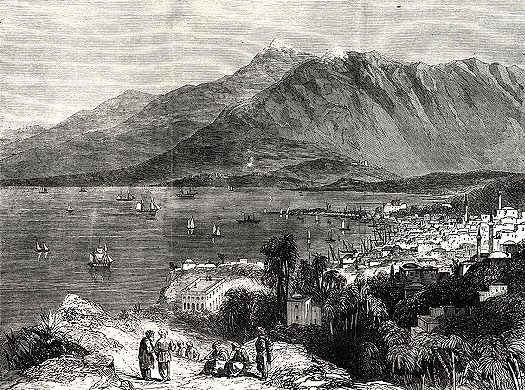 This print displays the town of 'Beyrout' (Beirut) and Mount Lebanon, originally drawn by J Lewis Farley in 1860 This print displays the town of 'Beyrout' (Beirut) and Mount Lebanon, originally drawn by J Lewis Farley in 1860 |
|
| 1824/25 |
Ismail Bey |
Mütesarrif of Jerusalem. |
| 1825/27 |
Uthman Agha |
Mütesarrif of Jerusalem. |
| 1826 |
Still increasing his reach as a highly loyal and useful servant of theOttomans, Abdallah Pasha is ordered to suppress a revolt in Jerusalem which has already begun in the previous year. The city is currently outside Abdullah's jurisdiction, but the governor of Damascus is unable to quell the rebellion. The rebels have ousted Jerusalem's mutasallim and control the city before Abdallah manages to restore order with very little bloodshed. |
|
| 1826 - 1827 |
Abdul Ibrahim Agha |
Mütesarrif of Jerusalem. |
| 1827 |
Ismail Afand |
Mütesarrif of Jerusalem. |
| 1827 |
Safi Muhammad Agha |
Mütesarrif of Jerusalem. |
| 1827 - 1831 |
Abdullah Pasha |
Governor of Gaza & Jaffa (1818-1821). Damascus & Sidon. |
| 1829 |
Mustafa Afand |
Mütesarrif. |
| 1829 - 1831 |
Abdul Ibrahim Agha |
Mütesarrif for the second time. |
| 1830 - 1834 |
Hüseyin III has attempted to placate the Europeans in their interest in Algiers by ensuring that the Jewish population there enjoys religious freedom and some hostages are released. It does him little lasting good, however. France invades Algeria and conquers it in progressive stages between 1830-1834. 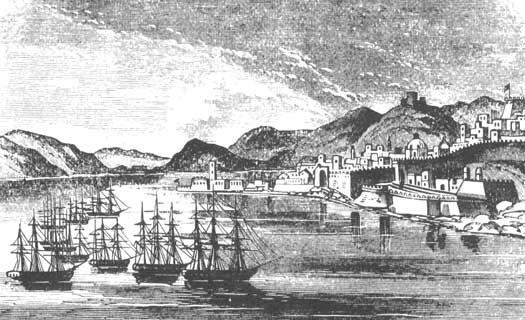 Algiers came under bombardment several times during the seventeenth and eighteenth centuries, usually due to its role in leading Berber piracy raids Algiers came under bombardment several times during the seventeenth and eighteenth centuries, usually due to its role in leading Berber piracy raids |
|
| 1831 - 1840 |
Husaum 'Abd al-Hadi |
Governor-general. |
| 1831 |
Sheykh Said al Mustafa |
Mütesarrif. |
| 1831/32 |
Yahya Bey |
Mütesarrif. |
| 1832 |
Muhammad Sa'ad Agha |
Mütesarrif. Ousted by an Arab revolt. |
| 1832 |
Qasim al-Ahmad seizes Jerusalem after leading his forces from Nablus during an Arab revolt in Palestine. Less than a month later, Jerusalem is captured along with Damascus by Ibrahim Pasha of [ Egypt](../KingListsAfrica/EgyptIslamic.htm#Muhammad Ali) (between May and June) on behalf of Muhammad Ali Pasha. They are annexed to Egypt and Jerusalem subsequently operates on an autonomous basis. The Ottomans retain only nominal suzerainty. The highly influential Abdallah Pasha is removed from office and exiled to Egypt. The relative freedom in the city now allows the first foreign consulates to be founded, and four Jewish synagogues are given permission to be renovated soon afterwards (in 1836). 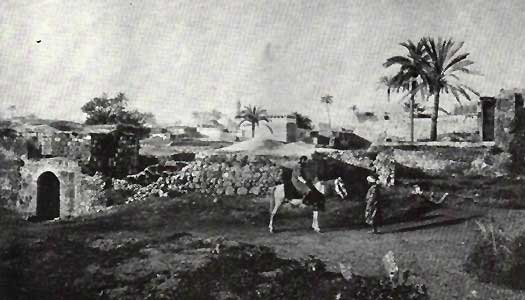 Despite being the favoured residence of the mütesarrifs, Ramla was not especially well-developed in the nineteenth century outside the residence itself Despite being the favoured residence of the mütesarrifs, Ramla was not especially well-developed in the nineteenth century outside the residence itself |
|
| 1832 |
Qasim al-Ahmad |
Captured Jerusalem during the Arab revolt. |
| 1833 |
Muhd al-Qasim bin Qasim al-Ahmad |
Son. |
| 1833 |
Yusuf al Qasim bin Qasim al-Ahmad |
Brother. |
| 1834 |
The Peasants Revolt is the result of various groups banding together to oppose Muhammad Ali Pasha and rule from [ Egypt](../KingListsAfrica/EgyptIslamic.htm#Muhammad Ali). All of them have been negatively affected by Egypt's recent reforms so they take control of much of Palestine. Muhammad Ali arrives to negotiate with them, securing a truce in July 1834. A good many regional leaders are arrested during the truce, so Qasim al-Ahmad, sub-governor of Jabal Nablus, continues the revolt. He and most of his fellow revolt leaders are captured and executed, while Nablus sees some of its previous freedoms being restricted. |
|
| 1834/35 |
Jabr Abu Ghosh |
Mütesarrif of Jerusalem. |
| 1836/37 |
Mustafa Agha al Sa'ad |
Mütesarrif of Jerusalem. |
| 1838 |
Muhammad Ali Agha al Dizdr |
Mütesarrif of Jerusalem. |
| 1838 - 1840 |
The position of governor of Damascus falls vacant again. On 10 October 1840 the Ottoman empire regains direct authority over the city and its territory, including Jerusalem. Despite this, increasing numbers of Jews begin to drift back to Jerusalem, and become the subject of international political interest and support. |
|
| 1838 - 1839 |
Ahmad Agha al-Asal al Dizdr |
Mütesarrif of Jerusalem. |
| 1841 |
Having now regained full control over Palestine, the Ottomans separate the Jerusalem district from the Damascus eyalet and place it directly under the administrative authority of Constantinople. 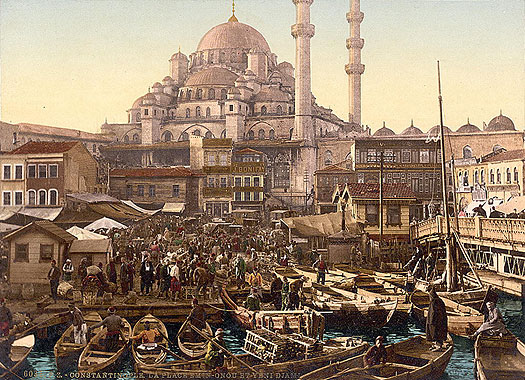 The scene in this early twentieth century hand-coloured postcard of Constantinople still carries much of the feel of the previous century The scene in this early twentieth century hand-coloured postcard of Constantinople still carries much of the feel of the previous century |
|
| 1841 - 1842? |
Mehmed Tayyar Pasha |
Mütesarrif of Jerusalem. |
| 1843? - 1843 |
Reshid Pasha |
Mütesarrif of Jerusalem. In office until Dec. |
| 1843 - 1844? |
Haider Pasha |
Mütesarrif of Jerusalem. |
| 1845? |
As'ad Pasha |
Mütesarrif of Jerusalem. |
| 1845 - 1847 |
Mehmed Pasha Kibrizli |
Mütesarrif of Jerusalem. |
| 1847 - 1848? |
Mustafa Zarif |
Mütesarrif of Jerusalem. |
| 1847 - 1849 |
Bahri Pasha |
Mütesarrif of Jerusalem. |
| 1849 - 1851 |
Adham Pasha |
Mütesarrif of Jerusalem. |
| 1850 |
The district of East Jerusalem outside the Old City walls is only able to begin to appear after 1850 when the Ottoman authorities allow structures to be built within eight hundred and fifty metres of the walls. Construction is not begun immediately, however, and probably takes more than a decade to become appreciable. |
|
| 1851 - 1853 |
Hafiz Ahmed Pasha |
Mütesarrif of Jerusalem. |
| 1853 - 1854 |
Rashid Pasha |
Mütesarrif of Jerusalem. |
| 1854 |
Yakub Pasha Osmanoglu |
Mütesarrif of Jerusalem. Between Mar-Oct. |
| 1855 - 1857? |
Kiamil Pasha |
Mütesarrif of Jerusalem. |
| 1857 - 1864 |
Surayya Pasha |
Mütesarrif of Jerusalem. |
| 1860 |
Jerusalem has become an intensely crowded city within its old walls. Sir Moses Montefiore, an Anglo-Italian philanthropist in the Holy Land, builds an almshouse in what becomes the Mishkenot Sha'ananim district, and settlement outside the walls begins, but some outward migration also takes place, to distant colonies such as Jamaica. 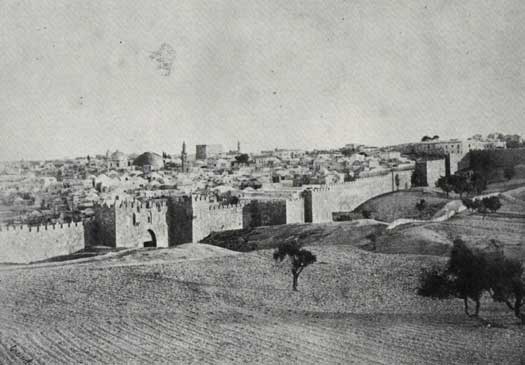 This view of the Damascus Gate in 1860 shows that Jerusalem was still confined behind the Old City walls, afraid to develop outside due to the high levels of banditry This view of the Damascus Gate in 1860 shows that Jerusalem was still confined behind the Old City walls, afraid to develop outside due to the high levels of banditry |
|
| The migration out of the Old City is slow at first, with many scared of bandit raids against the undefended suburb. A gate which is built around it and which is locked at night assuages some of the fear, while payments smooth the way for the rest. |
|
|
| 1864 |
Mehmed Hurshid Pasha |
Mütesarrif of Jerusalem. |
| 1864 - 1867 |
Izzet Pasha |
Mütesarrif of Jerusalem. |
| 1867 - 1869 |
Nazif Pasha |
Mütesarrif of Jerusalem. |
| 1869 - 1871 |
Mehmed Kamil Pasha |
Mütesarrif of Jerusalem. |
| 1869 |
Two more suburbs outside the Old City are started. Mahane Israel comes first, built by Jews from the Mahgreb in Africa (part of today's Mizrahi Jews grouping which covers all of North Africa's former Jewish Diaspora communities, but by now heavily intermixed with Sephardi Jews who had entered North Africa in large numbers from 1492). Nahalat is next, built by a cooperative of Jewish families in the Old City. The fear of banditry has been replaced by now with a spirit of building new and better neighbourhoods in a rapidly expanding Jerusalem. |
|
| 1871 - 1872 |
Ali Bey |
Mütesarrif of Jerusalem. |
| 1872 |
The Jerusalem sanjak is formally replaced by an independent mütesarrifate of Jerusalem, having been a sanjak within the Syria vilayet since 1864 following administrative reforms. 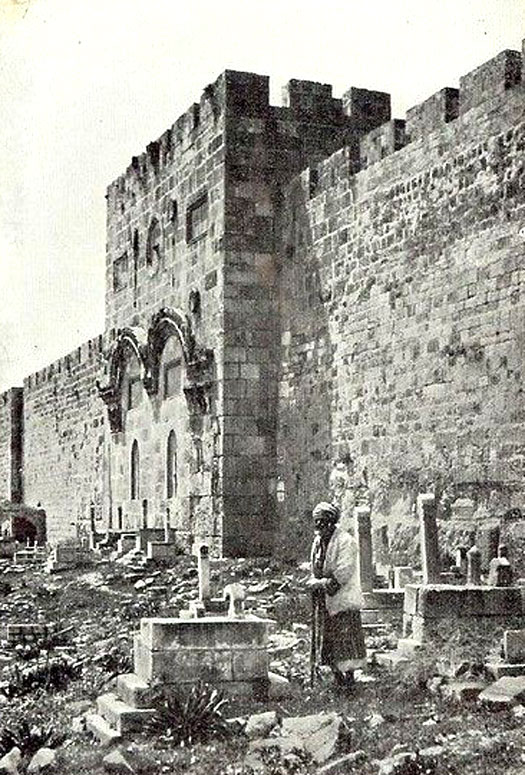 Jerusalem's Golden Gate was sealed at least fifteen hundred years ago, with a Muslim cemetery being laid in front of it because the Messiah is due to ride through the gate on a donkey Jerusalem's Golden Gate was sealed at least fifteen hundred years ago, with a Muslim cemetery being laid in front of it because the Messiah is due to ride through the gate on a donkey |
|
| 1872 - 1873 |
Nazif Pasha |
Mütesarrif of Jerusalem. Second term of office. |
| 1873 - 1874/75 |
Mehmed Kamil Pasha |
Mütesarrif of Jerusalem. Second term. Died 1879. |
| 1874/75 - 1876 |
Ali Bey |
Second term of office. |
| 1876 - 1877 |
Faik Bey |
Mütesarrif of Jerusalem. |
| 1877 - 1889 |
Mehmed Rauf Pasha |
Later an Ottoman senator. |
| 1881 |
The first modern-era wave of Jewish migrations back to the Holy Land begins with an event known as the First Aliyah. The Jews are fleeing pogroms in Eastern Europe, most notably in the territories of the Russian empire under Alexander III and his imposition of anti-liberalisation reforms. For the past century Russia has been operating an area known as the '[Pale of Settlement](../KingListsEurope/EasternLithuania.htm#Russian Governors)', largely territory to the west which has been acquired from the former Polish-Lithuanian Commonwealth. Today this forms Russia's western border region, and from 1791-1793 it has incorporated modern Belarus (eastern Poland at the time), eastern [ Latvia](../KingListsEurope/EasternLatvia.htm#Russian Governors), [ Lithuania](../KingListsEurope/EasternLithuania.htm#Russian Governors), the province of Bessarabia (modern Moldova), and western Ukraine. 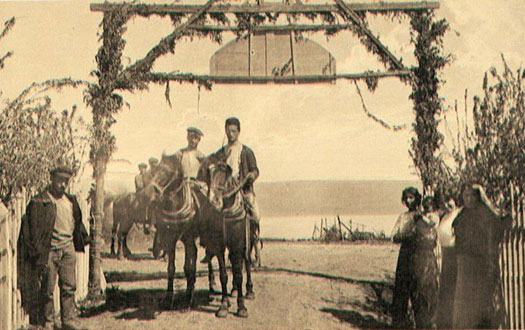 Poland-Lithuania's long-standing Jewish population was gradually forced to emigrate during the later Russian empire period, with most either going west or returning to Palestine Poland-Lithuania's long-standing Jewish population was gradually forced to emigrate during the later Russian empire period, with most either going west or returning to Palestine |
|
| The Jewish Diaspora population of the 'Pale' (mainly Ashkenazi Jews) is restricted from moving eastwards into Russia proper and is now being discouraged from remaining in the western border regions of the empire. Several months prior to this event however, migration by Yemenite Jews to Palestine has already begun. Communities are drawn back from Ottoman-controlled Yemen by improving standards and employment, especially due to European backing in the region. |
|
|
| 1890 - 1897 |
Ibrahim Hakki Pasha |
Later Ottoman grand vizier (1910-1911). |
| 1897 |
The question of a homeland for the Jewish Diaspora is gaining international recognition, helped on by the founding of a political form of Zionism (Jewish support for the creation of a Jewish homeland) and the first meeting of the World Zionist Congress in this year, held in Basel in Switzerland. The impression of the mütesarrifate of Jerusalem as an emerging country in its own right begins to grow in the mind of educated Arabs in the region. |
|
| 1897 - 1901 |
Mehmet Tevfik Bey |
Later Minister of Finance for last Ottoman government. |
| 1901 - 1902 |
Mehmed Çevad Pasha |
Later Minister of Finance (1909-1911). |
| 1902 - 1904 |
Osman Kazim Bey |
Mütesarrif of Jerusalem. |
| 1903 - 1914 |
The Second Aliyah to Palestine is triggered in 1903 by an anti-Jewish riot in the city of Kishinev (modern Chişinău), the capital of the province of Bessarabia (modern Moldova), part of the Russian empire. Something like forty thousand members of the Jewish Diaspora settle in Palestine, although only half remain permanently. 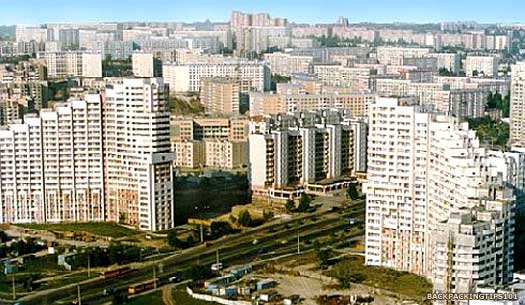 Modern Chișinău bears all the hallmarks of mass Soviet-era concrete construction, carrying little resemblence to the city of the early 1900s Modern Chișinău bears all the hallmarks of mass Soviet-era concrete construction, carrying little resemblence to the city of the early 1900s |
|
| Many others, evicted from their settlements in the '[ Pale](../KingListsEurope/EasternLithuania.htm#Russian Governors)' head towards western Poland or America (something which is dramatically highlighted, if with a touch of artistic licence, in the film musical, Fiddler on the Roof, 1971. which has its final scenes set in 1905). |
|
|
| 1904 - 1906 |
Ahmed Reshid Pasha |
Mütesarrif of Jerusalem. |
| 1906 |
The mütesarrifate of Jerusalem has its southern border redrawn, with the authorities being urged to do so by Britain. They are focussed on protecting their interests in the region, and making the border as short and easy-to-patrol as possible is one readily-achievable safeguard. |
|
| 1906 - 1908 |
Ali Ekrem Bey |
Died 1937. |
| 1908 - 1909 |
Subhi Bey |
Mütesarrif of Jerusalem. |
| 1909 - 1910 |
Nazim Bey |
Mütesarrif of Jerusalem. |
| 1910 - 1911 |
Azmi Bey |
Mütesarrif of Jerusalem. |
| 1910 |
The Shiraz Pogrom or 'Shiraz blood libel of 1910' is the result of increasingly aggressive anti-Jewish pogroms in Iran. The Jewish quarter in Shiraz is the victim of the 1910 pogrom, on 30 October 1910, although it also spreads to other towns. It is sparked by accusations that Jews there have ritually killed a Muslim girl. 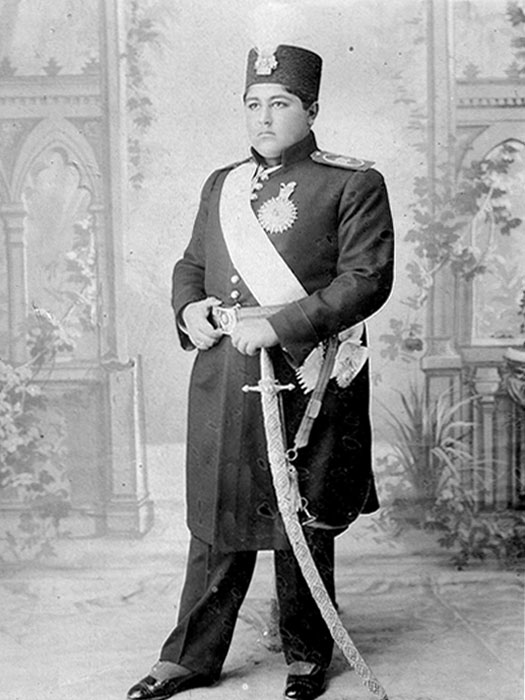 Ahmad Shah Qajar came to the Iranian throne in 1909 at the tender age of eleven, attempted to govern a land which was suffering increased levels of turmoil thanks partially to the First World War, and was deposed just shy of his twenty-eighth birthday Ahmad Shah Qajar came to the Iranian throne in 1909 at the tender age of eleven, attempted to govern a land which was suffering increased levels of turmoil thanks partially to the First World War, and was deposed just shy of his twenty-eighth birthday |
|
| Twelve Iranian Jews (or thirteen, accounts differ) are killed and around fifty more are injured, while thousands are robbed of everything they possess. An increased level of migration from the Jewish Diaspora takes place after this, mainly focussed on a return to Palestine. |
|
|
| 1911 - 1912 |
Çevdet Bey |
Mütesarrif of Jerusalem. |
| 1912 |
Mehdi Frashëri |
Albanian. Later prime minister of Albania. |
| 1912 - 1913 |
Tahir Hayreddin Bey |
Mütesarrif of Jerusalem. |
| 1913 - 1915 |
Ahmed Macid Pasha |
Mütesarrif of Jerusalem. |
| 1914 - 1915 |
In Europe, the German empire moves swiftly to support its ally, [ Austria-Hungary](../KingListsEurope/GermanyAustria.htm#Habsburg Emperors), in a long-anticipated Great War (later more readily known as the First World War, or World War I). The Ottoman empire sides with them, with Britain, France, and Russia arrayed against them. As the majority of Jewish communities in Palestine have originated from the territory of now-hostile nations, they are expelled by the Ottoman authorities. The hanging of a number of patriotic intellectuals by Jamal Pasha, wali of Damascus, is intended to put an end to local opposition to the 1908 Ottoman programme of Turkicisation in the region. Instead it has the opposite effect, raising tensions and nationalistic feeling against the Ottomans. 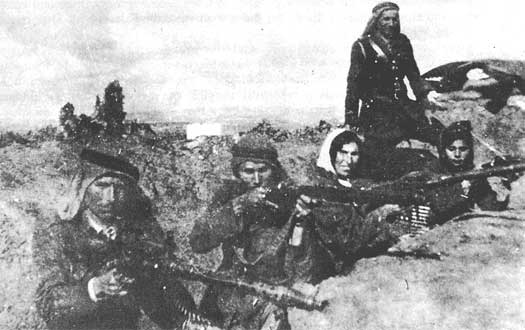 With the Ottoman empire fading in power and prestige, the time was ripe for the Arab Revolt, led by the Hashemites and T E Lawrence With the Ottoman empire fading in power and prestige, the time was ripe for the Arab Revolt, led by the Hashemites and T E Lawrence |
|
| 1916 - 1917 |
Midhad Bey |
Last mütesarrif of Jerusalem. |
| 1916 - 1917 |
Palestine, the ancient land of the Philistines, is taken from the crumbling Ottomans by the British and the Arab forces of the [Hijaz](ArabicHashemites.htm#Kings of Hijaz). The Jewish Legion (an unofficial name), has elements in the field of operations within the British army, although all are dismissed at the end of the war. Surviving expelled Jews are able to return to Palestine, although many have suffered three years of incredible hardship. Four hundred years of Ottoman rule is ended and, in 1917, the British Parliament's 'Balfour Declaration' gives backing for 'a national home for Jewish people' (including those of the Jewish Diaspora) in what is now mandate-controlled Palestine. |
|
 |
|
|

 This print displays the town of 'Beyrout' (Beirut) and Mount Lebanon, originally drawn by J Lewis Farley in 1860
This print displays the town of 'Beyrout' (Beirut) and Mount Lebanon, originally drawn by J Lewis Farley in 1860 Algiers came under bombardment several times during the seventeenth and eighteenth centuries, usually due to its role in leading Berber piracy raids
Algiers came under bombardment several times during the seventeenth and eighteenth centuries, usually due to its role in leading Berber piracy raids Despite being the favoured residence of the mütesarrifs, Ramla was not especially well-developed in the nineteenth century outside the residence itself
Despite being the favoured residence of the mütesarrifs, Ramla was not especially well-developed in the nineteenth century outside the residence itself The scene in this early twentieth century hand-coloured postcard of Constantinople still carries much of the feel of the previous century
The scene in this early twentieth century hand-coloured postcard of Constantinople still carries much of the feel of the previous century This view of the Damascus Gate in 1860 shows that Jerusalem was still confined behind the Old City walls, afraid to develop outside due to the high levels of banditry
This view of the Damascus Gate in 1860 shows that Jerusalem was still confined behind the Old City walls, afraid to develop outside due to the high levels of banditry Jerusalem's Golden Gate was sealed at least fifteen hundred years ago, with a Muslim cemetery being laid in front of it because the Messiah is due to ride through the gate on a donkey
Jerusalem's Golden Gate was sealed at least fifteen hundred years ago, with a Muslim cemetery being laid in front of it because the Messiah is due to ride through the gate on a donkey Poland-Lithuania's long-standing Jewish population was gradually forced to emigrate during the later Russian empire period, with most either going west or returning to Palestine
Poland-Lithuania's long-standing Jewish population was gradually forced to emigrate during the later Russian empire period, with most either going west or returning to Palestine Modern Chișinău bears all the hallmarks of mass Soviet-era concrete construction, carrying little resemblence to the city of the early 1900s
Modern Chișinău bears all the hallmarks of mass Soviet-era concrete construction, carrying little resemblence to the city of the early 1900s Ahmad Shah Qajar came to the Iranian throne in 1909 at the tender age of eleven, attempted to govern a land which was suffering increased levels of turmoil thanks partially to the First World War, and was deposed just shy of his twenty-eighth birthday
Ahmad Shah Qajar came to the Iranian throne in 1909 at the tender age of eleven, attempted to govern a land which was suffering increased levels of turmoil thanks partially to the First World War, and was deposed just shy of his twenty-eighth birthday With the Ottoman empire fading in power and prestige, the time was ripe for the Arab Revolt, led by the Hashemites and T E Lawrence
With the Ottoman empire fading in power and prestige, the time was ripe for the Arab Revolt, led by the Hashemites and T E Lawrence